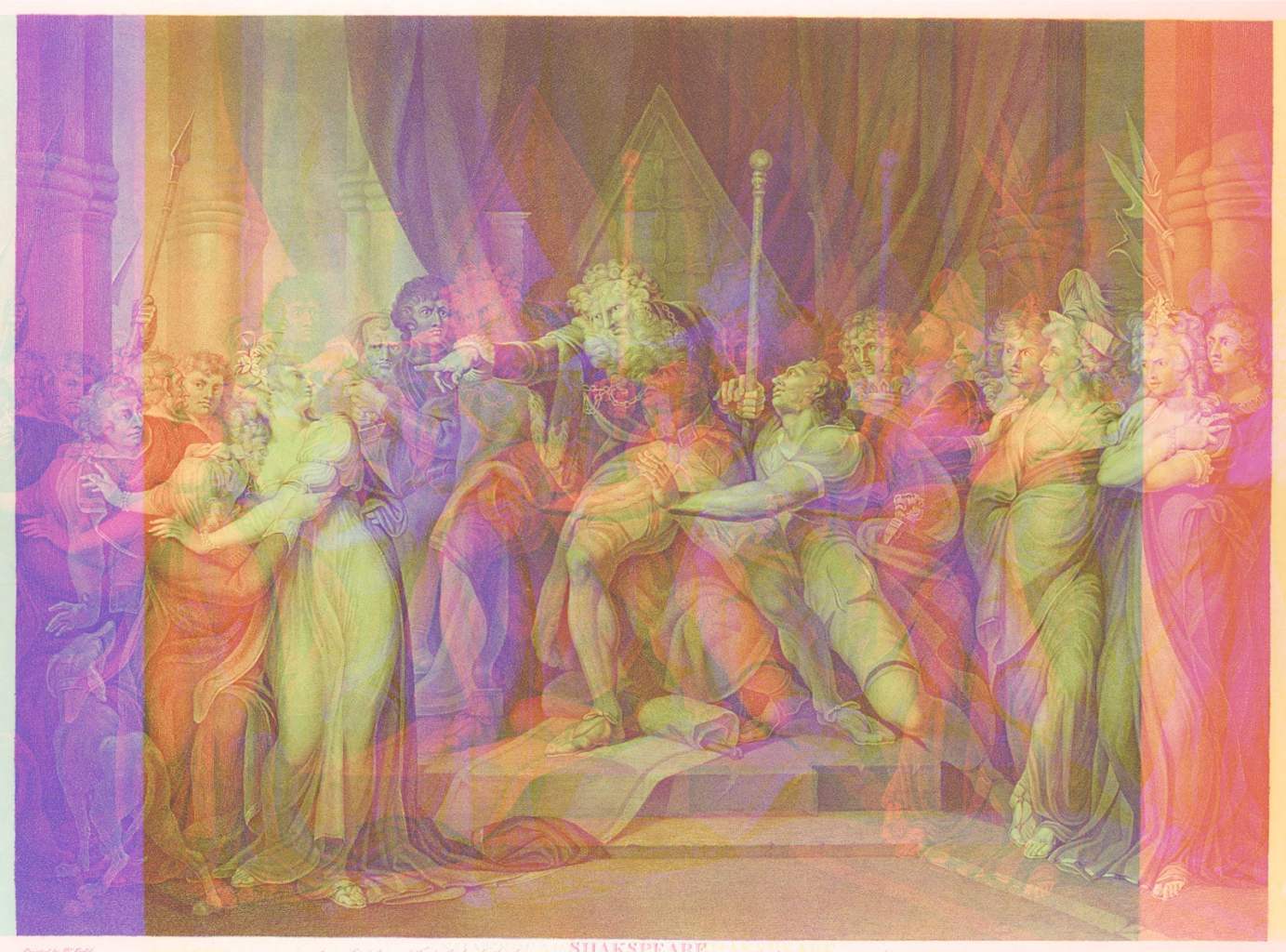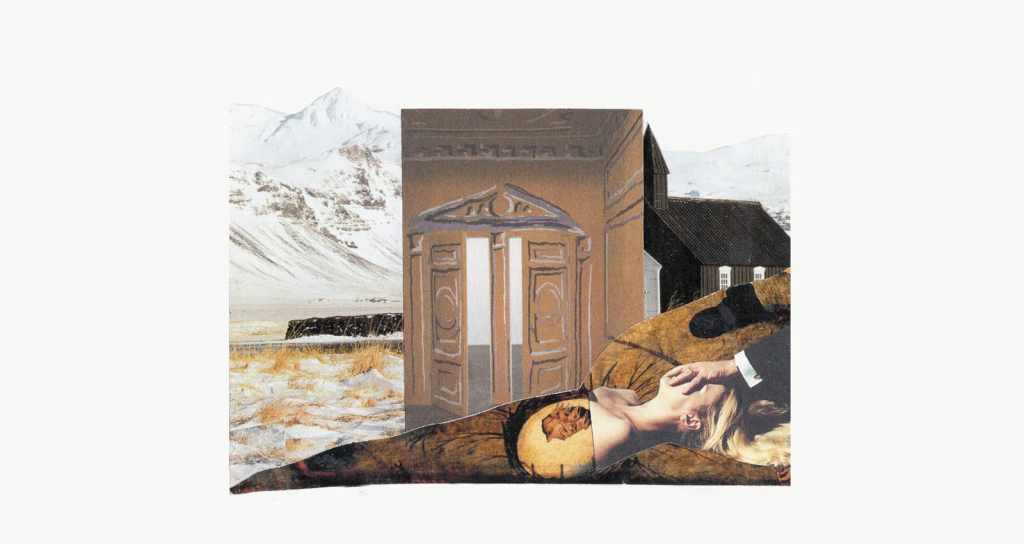Early on in her debut essay collection, Dead Girls: Essays on Surviving an American Obsession, Alice Bolin gives us a definition of the Dead Girl genre: highlighted by the dark specter of a deceased female character—more often than not murdered—who is depicted with an alternating degree of mature sexualization and infantilizing naiveté that earns her the deliberate title of “girl” versus “woman.”
This specter haunts the main character of the story, who happens to be the investigator of her death. In many cases, that specter also hangs over the entire world of the story. The Dead Girl is not a character so much as she is a haunting, a memory, an absence that is traced for the entirety of the plot. Of this posthumous obsession’s origins, Bolin suggests that “American boys in their grievance and longing invented their dream girl, the Dead Girl.”
I’d like to propose a revision to the origin of this species: American boys in their grievance and longing certainly revived the Dead Girl for our time, but we would be selling this genre short to suggest that it began in the United States in the 20th century. To be fair, it would be equally shortsighted to claim that opera is the bedrock of this genre (especially as opera was born out of a desire to restore a “corrupt” society through a return to Greek drama), but at the very least, Renaissance Italy serves as an important watershed in the Dead Girl’s timeline.
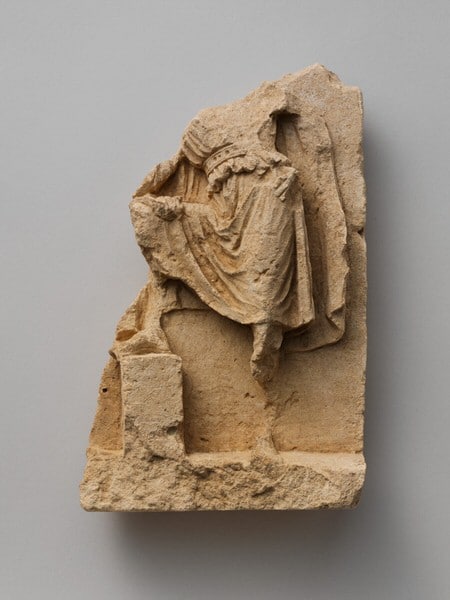
Like Bolin, I spent much of my 20s devouring and re-devouring David Lynch’s cult classic “Twin Peaks.” Like Bolin, I was keen on tracing the show’s central question—“Who killed Laura Palmer?” Unlike Bolin, however, who asserts that this question spawned the Dead Girl trope, I was taken by a central image of the pilot that solidified “Twin Peaks” as a continuation of a preexisting genre: Laura Palmer’s corpse, shrouded in a translucent white body bag, her hair coiled in mermaid-like tendrils and her lips a powdery shade of blue. It was the restaging of the finale of “Rigoletto.”
As Deputy Andy Brennan weeps uncontrollably while photographing the murder scene in small-town Washington, he is also continuing a storyline that was marked in 19th-century Mantua by Rigoletto cradling the near-lifeless body of his daughter, discovered in a burlap sack he believed to contain the body of his employer, the Duke of Mantua. The supernatural elements of David Lynch’s unfolding series paired nicely, too, with the elements of the metaphysic invoked at the end of the opera. The title character’s final words, “La maledizione!” refer to a curse placed on him by another father sentenced to death by the Duke in the first scene (and even served as the opera’s original title). A few hours later, the curse is fully realized in the loss of Rigoletto’s own daughter, Gilda.
It’s no great surprise that there is a link between an 1851 Italian opera and a 1990 American horror story. At their roots, both speak to a collective trauma experienced on the part of women that is only now being discussed in a way that may point toward resolution, with the ongoing conversation around #MeToo. In addition to inheriting a lineage of theatrical output that, over the centuries, helped to realize both “Rigoletto” and “Twin Peaks,” we’ve also inherited the cumulative trauma that both stories (and countless others like them) exemplify.
“There seems to be an almost inevitable outcome to traumatic experience cut out of social discourse,” writes Dr. M. Gerard Fromm in Lost in Transmission: Studies of Trauma Across Generations. “The next generation must deal with it and sometimes even represent it.” This resulting phenomenon takes on many monikers, including “intergenerational trauma” and “traumatic transmission.” It also explains in part why we continue to watch the same opera heroines die over and over again.
Through the lens of “Twin Peaks,” Bolin gives us the two commandments of a Dead Girl Show that are also two common themes of traumatic transmission. First, she writes, “Girls are wild, vulnerable creatures who need to be protected from the power of their own sexualities.” This is as true for Laura Palmer as it is for Gilda, who falls for the Duke believing him to be a poor student, presumably has sex with him after his courtiers abduct her and bring her to his palace, and sacrifices herself for him when she learns of her father’s plan to have him assassinated.
Sexuality and female mortality are further intimately linked in opera: if the ill-fated heroine is less of a Gilda—doe-eyed and susceptible to the duplicitous nature of male seducers—then her wildness and lustfulness fully take the wheel, as shown in the title character of Bizet’s “Carmen.” These machinations still leave Carmen vulnerable in the end to the homicidal jealousy of Don José. Somewhere in the middle of these two extremes are characters like Donna Anna, who serve as the springboard for much directorial debate: Was she raped by Don Giovanni, or a willing participant? Does she love Don Ottavio or is her betrothal to him a product of the time and class expectations versus genuine desire?
Related to characters from Gilda to Donna Anna is the second of Bolin’s Dead Girl commandments: “Trust no dad.” In “Twin Peaks,” we learn that—spoiler alert—Laura Palmer’s own father unknowingly killed her, after years of sexually abusing her, while possessed by a malevolent being known as Killer BOB. While Rigoletto does not directly kill his daughter, his actions are what directly affect her death. And, much like Leland Palmer, Rigoletto also dodges his complicity in his daughter’s murder by blaming not his own shortsightedness when it came to her emotional growth and vulnerability, but rather a curse spat at him in the opera’s opening scene.
Dead Girls expands on the concept of “Trust no dad” to eventually be recast as the Oedipal-level “Trust no male authority figures.” If the father didn’t do it, the husband is another well-worn trope. Interesting, in this context, that Don Ottavio would tell Donna Anna after she discovers her own father murdered (by Don Giovanni), “Hai sposo e padre in me,” or “You will have both husband and father in me.” In Claus Guth’s 2008 staging of “Don Giovanni” for the Salzburg Festival, Guth eschews the final sextet, thus freeing up Donna Anna to take her own life after “Non mi dir.” A decade too early for #MeToo, Guth’s Donna Anna is undone by her own centuries of sexual trauma.
The emphasis on male authority as the central character, as both investigator and instigator, becomes the nexus around which feminine vulnerability and sexuality orbit. “Rigoletto” and “Don Giovanni” place the emphasis on main characters who are more affectors of trauma than affected by trauma, following in Bolin’s description of father figures holding “a sinister interest in controlling girls and therefore in harming them.”
This same trait is apparent in Don José who, while not the title character of his work, is the more three-dimensional character compared to Carmen’s uncompromising will. As such, José is more or less exonerated at the end of the production. While plenty of audiences jokingly boo the tenor playing Pinkerton in the curtain calls for “Madama Butterfly” after his callous commodification of Cio-Cio San that leads to her suicide, I have yet to see a similar reaction happen for any number of sadistic Don Josés. And perhaps the fact that I can attest to having seen at least a dozen of them in my 25-plus years of opera-going is part of the problem.
In her memoir, Wirklich wichtig sind die Schuhe, Elīna Garanča writes, “The mess of the outside world and everyday life does not belong in the theater. Here you can immerse yourself in a different world, treat yourself to a few hours of magic, fantasy, and strong emotions.” However, looking at Garanča in the final moments of one of her signature roles as Carmen, slumped over lifeless on the stage like a rag doll, I’m not sure I’m ready to agree that everyday life and the mess of the outside world aren’t recused from the theater. In fact, both elements are lying there, hidden in plain sight.
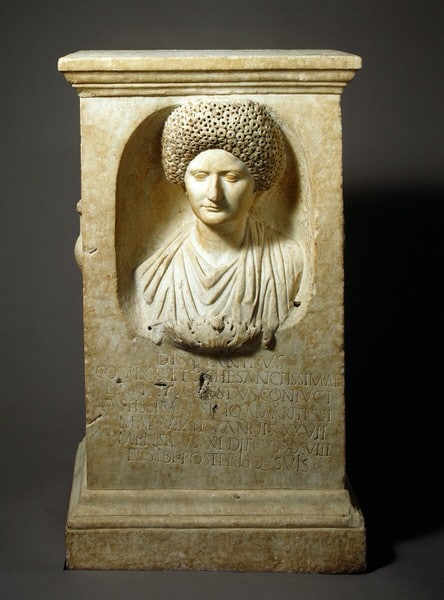
For all that is made of the implausibility of opera plots, they aren’t too far off from a plot like that of “Twin Peaks” or those found in hardboiled noir (which Bolin explores as proto-Dead Girl genre). Nor are these are stories unheard of in real-life 2018. Even after Dead Girls had been finished and was approaching its publication date earlier this year, news headlines were dominated by events like a school shooting triggered by the rebuked advances of a female classmate and pedestrians being run down by a man whose greatest indignation was being “involuntarily celibate.” The link between domestic violence and mass violence has earned the former term a new description from experts: “intimate terrorism.”
Don José may have passionate music, he may be seen as sympathetic in the shadow of Carmen, a woman who refuses to conform to the morality of Bizet’s era, but his character shows every trait one would expect to see from an intimate terrorist. I wouldn’t be surprised to hear that already an ending to “Carmen” has been staged in which he kills Carmen alongside a half dozen or so spectators outside of Seville’s Maestranza bullring.
Even Orpheus, one of the original opera characters, can be seen as propagating some form of intimate terrorism, or at the very least fulfilling the trope of The Husband Did It. The mythological widower first appears as investigator when he enters the underworld to rescue Eurydice, whose loss dominates the first half of the opera. However, it’s also Orpheus who kills his wife the second time due to his own lack of self control when it comes to not turning to look at her before they leave the realm of Hades. The portrayal of Eurydice causing this downfall by essentially badgering him into turning back is proto-victim blaming.
Which brings us to the other looming question: Why do we continue to see the same operas? Why do we continue to focus on the musical beauty of the deaths of Gilda, Carmen, or Eurydice (hell, throw a dart at a wall plastered in the names of female opera roles and I’ll be willing to bet you hit on an operatic Dead Girl), instead of looking critically at the trauma of their deaths?
Much like the Dead Girl genre, women in opera have historically tended to pose problems in need of resolution. So much so that, in Bolin’s terms, the “problem of absence is generally easier to deal with than the problem of a woman’s presence.” The biggest difference between a Dead Girl Show and an opera is that the whodunit doesn’t need to be worked out. We see the plot unfold in real-time, and most of the time we know before going into the theater who will and won’t survive by the end of the evening. Instead of revealing who did it, the reveal is usually that the woman dies in the end. And so the question this reveal answers is not a riff on “Who killed Laura Palmer?” but rather, “How do you solve a problem like [insert a female opera character’s name here]?”
If we are so used to saying that the Husband Did It, a trope so common that in the most recent episode of the weekly Netflix series “The Break with Michelle Wolf,” Wolf sends up her own network’s obsession with the genre, why do we not see the pattern of systemic misogyny, rape, and violence against women? Why do we consider it inevitable that these crimes continue to occur? Why do we excuse the acts perpetrated by the men of opera because they are “bound to” happen, if not even justified in happening?
We see the same operas season after season, much in the same way that television networks pass along the same gruesome murders to deconstruct and reconstruct again in crime shows. The murder of JonBenét Ramsey is as much a guarantee of viewership or readership as a revival of “Carmen” is—an excuse to program these works season after season at the expense of lesser-seen gems like “The Makropulos Case.”
Perhaps part of this is the placation of our own ego as the audience: We know these stories by heart. We know that we would never sacrifice ourselves for a philandering husband that has deserted us with our child for years on end, even going so far as to remarry in absentia and come back to demand the child. We know that we would never allow ourselves to be killed in the place of a man we thought to be a sincere student but is in fact a married member of the nobility, a proto-Trump who feels entitled to whatever pussy he can grab. We know that we would be too clever to allow ourselves to be stabbed by our ex-boyfriend in a public setting.
Therein lies the fallacy that Bolin points out in popular culture, which is even more stark in the historical world of opera: we’re not that smart, especially in the face of transgenerational trauma. I can speak from personal experience on this one: My mother, a medical school graduate, married not one but two domestic abusers after my father died. She’s still even technically married to the second one, though they haven’t lived together for 20 years. Considering this in retrospect, it’s all the more unsurprising that this is the woman who also helped to instill in me a love of opera; a love for repeating the traumas of rape, murder, incest, and suicide through the same shopworn plots season over season.
Beyond ego, this is representative of our inability to grapple with the millennia of trauma brought on by the subjugation of an entire gender, a subjugation that sits at the forefront of most opera plots. As Fromm writes, “what human beings cannot contain of their experience—what has been traumatically overwhelming, unbearable, unthinkable—falls out of social discourse, but very often on to and into the next generation as an affective sensitivity or a chaotic urgency.”
As I write this, Yuval Sharon’s new production of Wagner’s “Lohengrin” is playing in the composer’s home theater in Bayreuth. In the theater still run by the family of a composer whose operas remain some of the harshest towards women and whose personal politics added more kindling to the collective historical trauma of the 20th century, Sharon’s debut not only marks the first time an American has helmed a Bayreuth production, but also the first time in which Elsa doesn’t die.
“Lohengrin” is less the apogee of a Dead Girl Opera as some of the genre’s other heavy-hitters, including other works in Wagner’s own canon. But one element of the Dead Girl offshoot that it does present in crystal-clear definition is the secondary theme of women sacrificing other women for their own gain as a means of survival. The two main female roles in “Lohengrin,” Ortrud and Elsa, are generally presented as living in dysmorphic relationship to one another.
Elsa relies on Lohengrin to break free from the bondage of Ortrud and Telramund, but in a confrontation with Ortrud before her wedding to Lohengrin, a seed of doubt is planted that leads to Elsa’s eventual undoing. In this scene between the two women, traditionally staged with Ortrud at the height of manipulative cruelty as a form of ruthless survival instinct, we see her, in Bolin’s words, “acting out another script authored by a sexist society.” Elsa falls for the script hook, line, and sinker; she falls into the repetitive traumatic cycle of self-doubt by asking Lohengrin his name, thereby breaking the one rule he’s imposed on their marriage, ending the relationship, and resulting in her death (the cause, as listed on the coroner’s report: being female while in an opera).
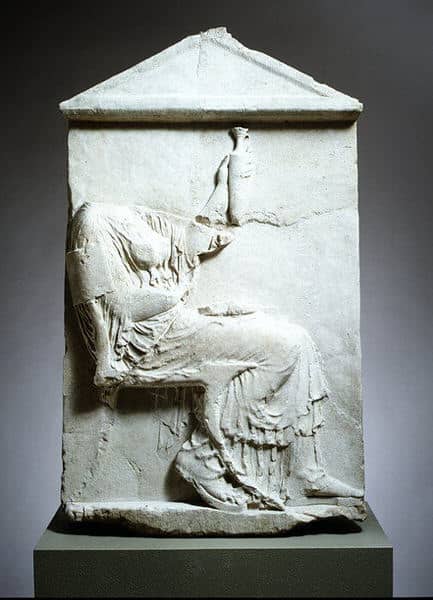
In Sharon’s staging, however, while Elsa is saved by Lohengrin from her initial bondage, the relationship he imposes on her becomes the real trap. Taken in this context, Ortrud’s scene with Elsa is played as a liberation for the character, who is able to escape a preposterous marriage that, according to a New York Times review, even hints at domestic abuse on Lohengrin’s part, by knowing exactly what button to push. The legacy of countless Elsas being punished for their own vulnerability to manipulation by innumerable Ortruds since the opera’s premiere in 1850 is resisted here. In Sharon’s staging, Elsa survives the repetitive narrative of trauma that has been upheld for the last century-and-a-half in the name of the opera’s heritage. In fact, in a separate interview with the New York Times, Sharon seems less intent on blaming Wagner for this pathologizing of misogyny as he is on bringing the 19th-century interpretation of the Lohengrin myth to a more natural conclusion for audiences in 2018. In Fromm’s terms, he’s resisting the dissociation from heritage in order to “bring [this] full, tragic story into social discourse.”
Is society ready for a “Lohengrin” that breaks from tradition and leaves Elsa and Ortrud “liberated from patriarchy, and for the first time given complete agency [while] Lohengrin, a failed hero, leaves in shame”? According to the Times review, the work’s premiere earned “barely any boos,” which seems like milquetoast praise if we forget that the audiences at Bayreuth are among the toughest and most conservative in opera. In the words of Brecht, words that Sharon quotes in his program notes, we may be ready to embrace the doubt that compels us to “stop believing in the strength of [our] oppressors.”
Ultimately, the legacy of transgenerational trauma is oppressive. Its strength is perpetuated through ongoing retellings of the same stories, serving no one except the trauma itself. In rewiring the story of “Lohengrin” to be less about Elsa’s demise, and more about how Lohengrin’s center will not hold, Sharon posits that liberation is possible. Elsa’s future may not be clear as she ends the opera setting off into the unknown, but it’s at the very least in her hands.
So, too, is the future of operatic stagings in our hands as interpreters. And by “interpreter,” I include those of us in the audience, as it is as much on us to consider the works we see beyond face value and question their motives, mythos, and morals in a time where we are more primed to question the legacies we inherit. If the characters of Dead Girl works are plagued by memory gaps, we can consciously reject the selective memory that keeps us seeing the same performances with the same deaths and the same Oedipal blindness to the integration of outside world with theatrical representation.
Bolin’s Dead Girls is a critique of popular culture that reminds those of us who see opera and classical music as untouchable that the roots of both forms are interchangeable and worthy of scrutiny. Opera stagings such as Sharon’s “Lohengrin” serve as object lessons in how not to blindly repeat and relive transgenerational trauma. They are a reminder that we’re free to rewrite the ending. ¶


